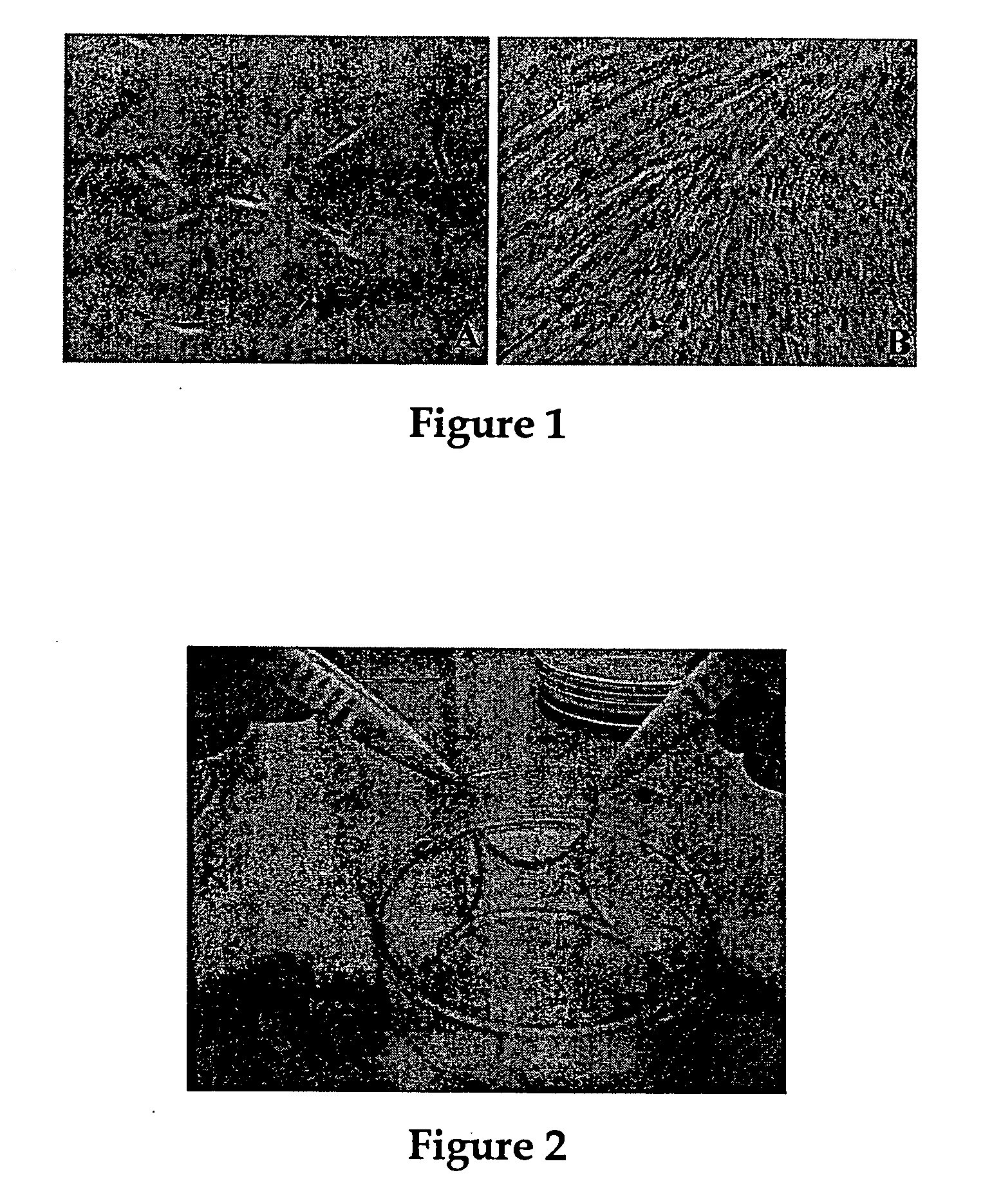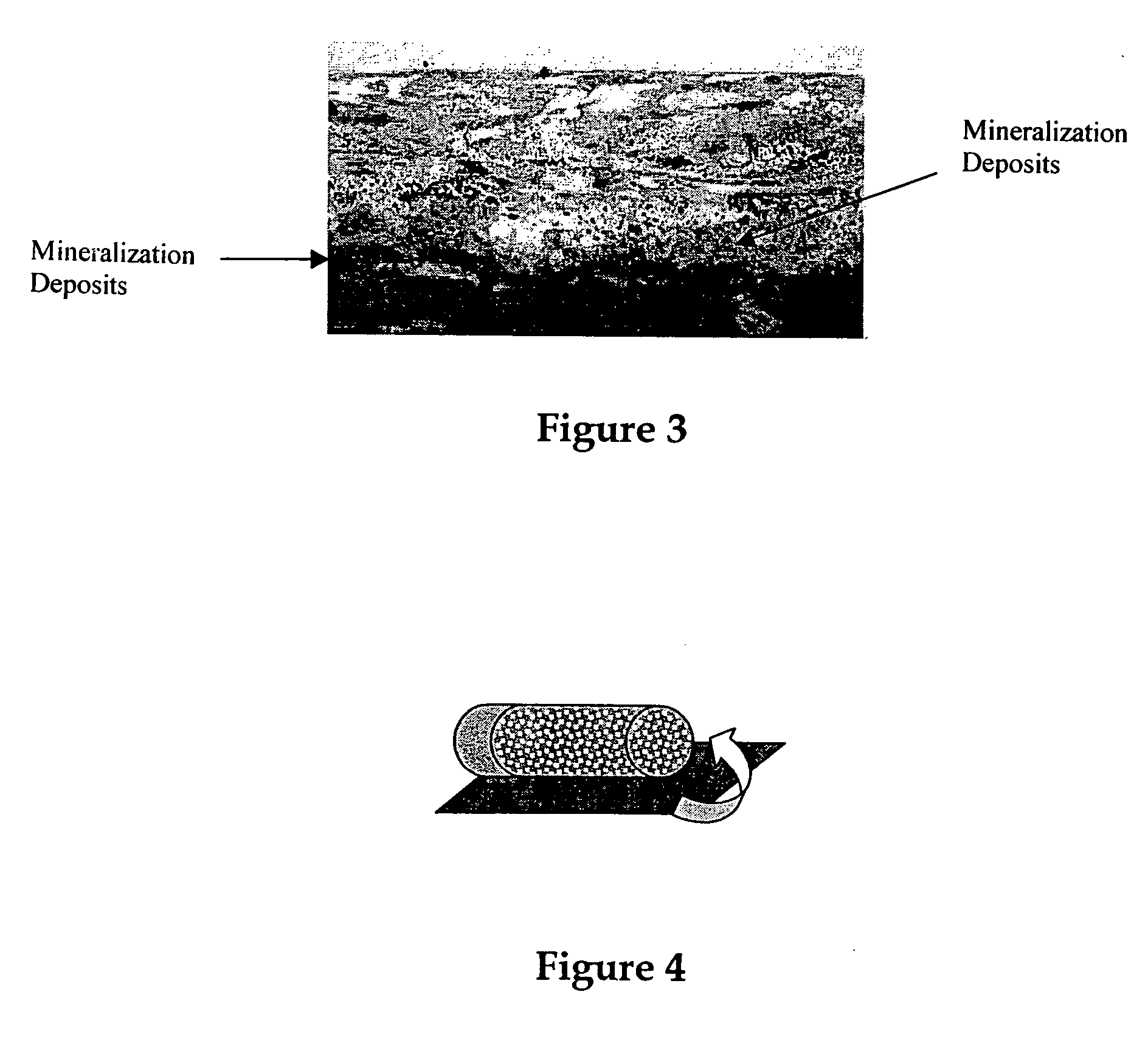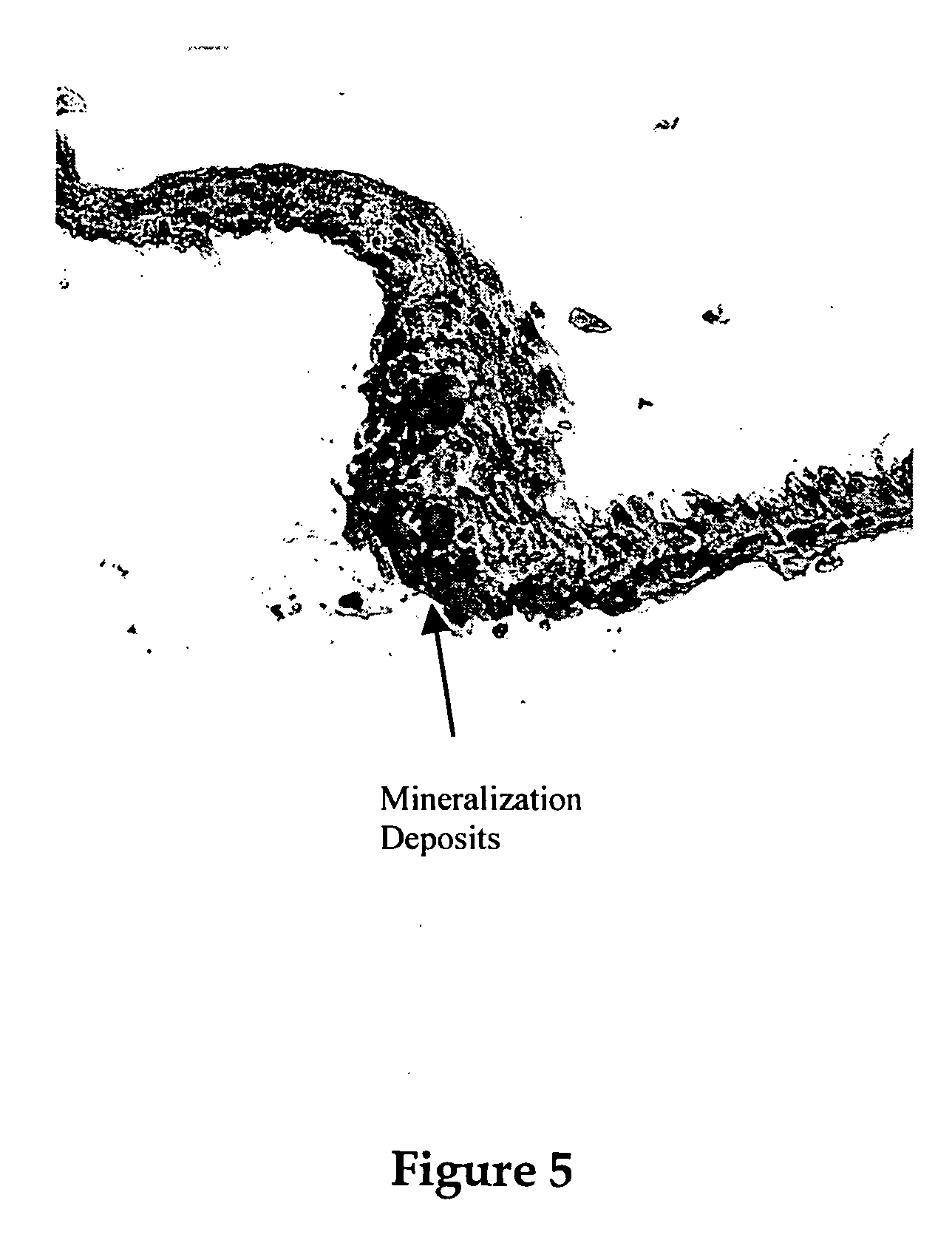Cell constructs cultured in vitro, preparation and uses
a cell construct and in vitro culture technology, applied in the field of cell constructs cultured in vitro, preparation and use, human and veterinary health, can solve the problems of limited mainly to specific tissues and lack of characteristics suited for direct therapeutic us
- Summary
- Abstract
- Description
- Claims
- Application Information
AI Technical Summary
Benefits of technology
Problems solved by technology
Method used
Image
Examples
example 1
Extraction and Culture of a Cell Sheet from Cells Sampled from a Dental Root
In this example, the cells were extracted according to the following steps:
The dental tissue specimens were maintained in transport medium until the time of treatment, if possible within 24 hours of receipt. The tissues were then washed 3 times in PBS, in the presence of antibiotics, so as to eliminate excess blood. The roots of the teeth were then placed in Petri dishes 60 mm in diameter for example with about 5 ml of collagenase A (see paragraph describing the media). The teeth were scraped with a scalpel from halfway down the root to its lower extremity, until small fragments of cement and dentin were obtained. The fragments were incubated at 37° C. overnight (between approximately 16 and 20 hours) in a CO2 incubator. The cells and tissue fragments were placed in a tube, centrifuged and resuspended in culture medium. The suspension of cells and debris was then reseeded in the extraction Petri dish wit...
example 2
Production of the Construct
The tissue produced contains cells associated with a dense three-dimensional network of extracellular matrix newly synthesized by these same cells. Said extracellular matrix was produced in response to stimulation of the cells by ascorbic acid, a synthetic derivative thereof or a nutrient acting on the synthesis of extracellular matrix, without the need to add exogenous matrix.
Said tissue was produced in culture containers, porous or not, of different sizes according to the desired dimensions. Fibroblasts were seeded at a density comprised between 3,000 and 12,000 cells / cm2. The culture medium was changed at regular intervals, for instance 3 times a week for 2 to 6 weeks, with or without shaking of the cultures, so as to maintain environmental (physico-chemical) and nutritional conditions favorable to cell growth.
The cells involved in the tissue reconstruction may come from a same cell population or from different cell populations thus forming a hete...
example 3
Implantation of a Construct in vivo
This example describes the in vivo introduction of an implant of the invention comprising a tissue construct.
The construct was prepared as described in Examples 1 and 2 from human periodontal ligament cells (PDL), then rolled around a bioglass implant (45 S 5). The construct was stored in DMEM medium supplemented with an antibiotic (gentamicin). Athymic male mice (Swiss NU / NU, 4 weeks old) were anesthetized. A subcutaneous implant was inserted on the dorsal side. To do so, four pouches were prepared on each mouse under sterile conditions. The implants were inserted in these pouches, which were then sutured. The sutures were covered with a dressing.
One month post-implantation, the mice were sacrificed and the constructs were recovered with the adjacent tissue of murine origin. All this was resin-embedded after fixation. Sections were prepared and stained with paragon. The sections were analyzed, and the constructs obtained were compared with t...
PUM
| Property | Measurement | Unit |
|---|---|---|
| thickness | aaaaa | aaaaa |
| thickness | aaaaa | aaaaa |
| thickness | aaaaa | aaaaa |
Abstract
Description
Claims
Application Information
 Login to View More
Login to View More - R&D
- Intellectual Property
- Life Sciences
- Materials
- Tech Scout
- Unparalleled Data Quality
- Higher Quality Content
- 60% Fewer Hallucinations
Browse by: Latest US Patents, China's latest patents, Technical Efficacy Thesaurus, Application Domain, Technology Topic, Popular Technical Reports.
© 2025 PatSnap. All rights reserved.Legal|Privacy policy|Modern Slavery Act Transparency Statement|Sitemap|About US| Contact US: help@patsnap.com



